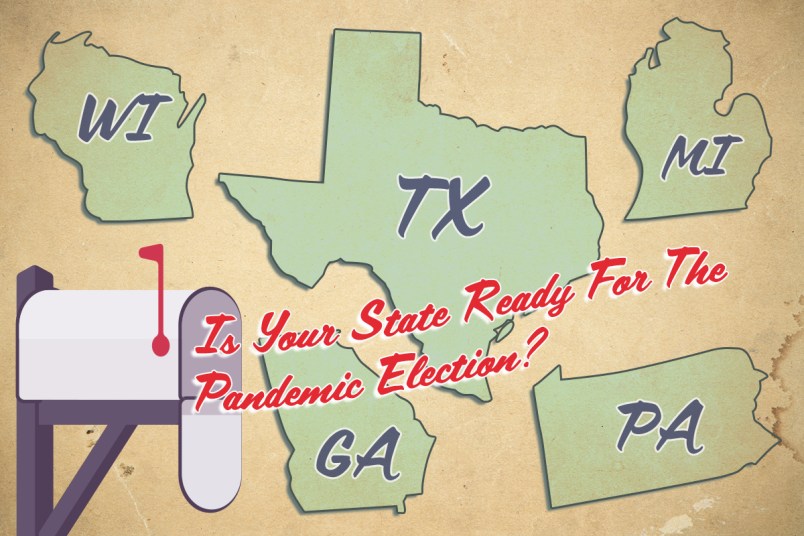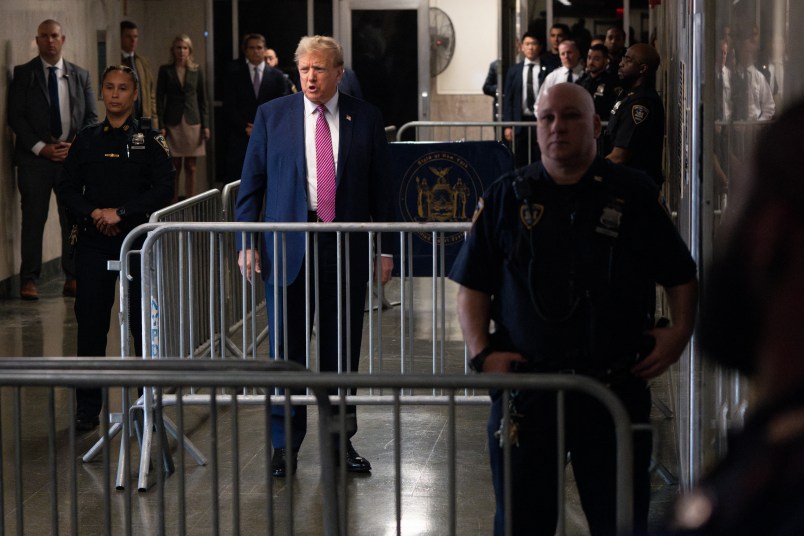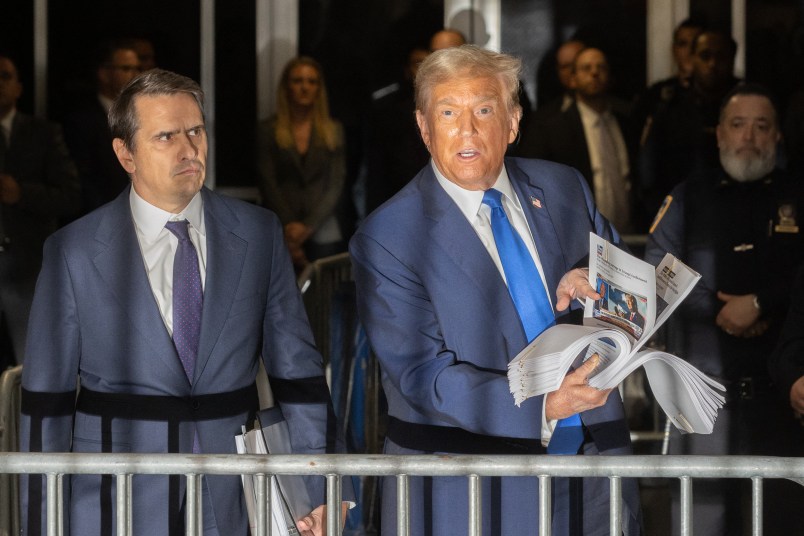With an ever-changing landscape around voting during the pandemic, it’s hard to predict exactly how rocky November’s election will be or what kind of chaos could be in store.
While some states have made great strides in adapting their election infrastructure for the COVID-19 outbreak, trouble spots remain. Further complicating the picture is a President eager to trumpet false claims about voter fraud, while his campaign finds other ways to gum up the works.
To help you prepare for things getting messier come November, we’re taking a state-by-state look at the places that appear most ready for what the pandemic could bring, and where things are most likely to be knocked off kilter due to coronavirus.
Across the country, a picture is developing of what key factors will determine a smooth — or not so smooth — election. Which states could take several days to report their election results? Where are Trump’s allies most focused on fighting the expansion of vote-by-mail? And what kind of policies are still giving voting rights advocates heartburn? These are some of the questions we will be answering in the coming weeks, as we take a look at how each state is preparing for the pandemic election.
Here’s our look at Georgia, Michigan, Pennsylvania, Texas, and Wisconsin. We will continue to publish these state-based profiles in the weeks leading up to the election.
Georgia
Georgia’s debacle of an election in June was a warning sign for the rest of the country. It encapsulated all the kinds of things that could go wrong in November, and there has been a blame game between state and local officials over who was at fault for the fiasco, which saw the most pronounced problems in the Atlanta metro area. Regardless, with its history of voter suppression fights and at least one, if not two competitive Senate races, Georgia will be closely watched in November — and the partisan rancor in the state won’t help things go smoothly.
Georgia offered no-excuse absentee voting before the pandemic, but nonetheless had limited experience, before this year, with implementing large scale mail-in voting. Mail ballots typically made up a single-digit percentage of total votes cast, but nearly half of Georgia’s June voters cast absentee ballots. To take pressure off the counties in June’s primary, state officials proactively sent absentee ballot request forms to active voters. Yet, local officials in some jurisdictions were overwhelmed by the applications that came back in, and long lines at the limited in-person voting sites were exacerbated by those who showed up because their mail ballots didn’t arrive in time.
For the general election, the state has scaled back its proactive mailing of absentee ballot applications in favor of an online application portal it’s setting up instead. Meanwhile, in the August run-off, there continued to be technical issues with the new in-person voting technology the state adopted this year. If unresolved, those problems could bring about a repeat of June’s long lines for November. A public-private partnership will have voters casting ballots in Atlanta’s NBA stadium come November — a model which has reduced waits in pandemic elections elsewhere. But for absentee voters, ballot rejection practices will be a major question, as voters of color tend to be overrepresented in the rejection rates of some Georgia counties.
Michigan
Michigan has flown under the radar in terms of election issues this year, but that doesn’t mean there isn’t anything to worry about. The battleground state is a focal point for both presidential campaigns, and Sen. Gary Peters (D-MI) also faces a re-election battle this cycle. That has helped fuel lawsuits over absentee voting and legal challenges from GOP-backed groups seeking to purge voter rolls.
The state has also become a lightning rod of disinformation, with President Trump singling the state out in tweets bashing vote-by-mail and Don Jr. wailing about people voting from beyond the grave (not true).
Michigan voters passed comprehensive election reforms in November 2018 which guaranteed automatic voter registration, same-day voting registration, and, crucially, allow people to obtain absentee ballots without providing a reason. But the changes leave a short turnaround time for voters between the absentee ballot request deadline — Oct. 30 — and the due date for their receipt, Election Day, stoking concerns over ballots coming in after then deadline. Michigan’s GOP-controlled state legislature has blocked attempts from the Democratic secretary of state to proactively send out absentee ballots ballots — instead, the state will proactively mail out informational postcards about absentee voting.
The state’s August 3 primary offers a preview of what Michiganders could be in for this November. The state saw a record 2.5 million voters turn out, two-thirds of whom voted by mail. The surge led to delays in counting the votes and to litigation contesting whether thousands of ballots that were postmarked before the election but arrived after the election are valid. Michigan’s Secretary of State Jocelyn Benson has said that more than 80 percent of the nearly 11,000 ballots rejected were tossed out either because they arrived too late, or because of signature verification problems. Election officials have asked for money to hire more staffers for November and legislative changes to allow them to tally votes before Election Day, but neither appear to be forthcoming. Benson has warned that the primary suggests that close races in Michigan this November may not be called until the weekend after the election.
Pennsylvania
Pennsylvanians couldn’t have known, when Gov. Tom Wolf (D) signed landmark new voting legislation into law last October, how quickly it would be put to the test. With residents allowed to vote by mail without an excuse, and with the COVID-19 crisis keeping many voters away from crowded polling places, the state’s primary elections offered a useful preview of what the state may see in November.
It went … okay. The day before the primary, Wolf signed an executive order allowing officials in six counties to count mailed ballots that arrived late, as long as they were sent on time. The results in some races weren’t known for several days. And the state was sued over a “constitutionally deficient” signature verification process that left many voters without options for curing allegedly “mismatched” signatures. In all, according to CBS News, more than 26,000 ballots were rejected, or 1.9% of the 1.49 million cast by mail.
For the general election, the state has sought to allow election officials to count ballots that were cast on-time but arrive up to three days late. In addition to that legal question, which is now before the state’s Supreme Court, lawsuits abound in the Keystone state over everything from ballot drop boxes to poll watchers’ residency requirements. (The Trump campaign asserts that dropboxes make fraud easier, but have admitted there’s no evidence of this.)
Some counties have taken extra steps to make it easier to avoid the mail when voting, and voters in select counties may be able to use “satellite” locations as a one-stop-shop for requesting and submitting absentee ballots in one fell swoop. But these locations need to be funded first, so it’s unclear whether that option will be available everywhere. Voters can also apply for mail-in ballots directly from their county election office, where they can submit them once completed as well.
The stakes couldn’t be higher: President Donald Trump narrowly won Pennsylvania in 2016, but current polling shows Joe Biden slightly ahead there. Secretary of State Kathy Boockvar has predicted that 50% of voters will cast ballots by mail rather than in person. And even with the hype around mail-in voting, the potential for poll worker shortages continues to be a concern for in-person voting, given the impact of COVID-19 on a workforce that skews older.
Texas
Texas has been one of the states most resistant to expanding its vote-by-mail apparatuses amid the pandemic, and already had stiff qualifications about who can vote absentee if the voter is under 65 years old. Those restrictions prompted a lawsuit homing in on the absentee ballot exception for those with a “sickness or physical condition,” as the Texas Democratic Party and some voting rights advocates argued that susceptibility to catching COVID-19 should qualify voters under that provision. The case made its way up to the entirely-Repubican state Supreme Court, which ruled against the Democrats, but added that election workers cannot inquire into the nature of a voter’s claimed disability. However, state Attorney General Ken Paxton effectively closed that loophole by threatening any third party that encourages voters who usually wouldn’t qualify to use the disability clause with criminal conviction.
As it is, very few Texans vote by mail in a normal year. “Going from 8 percent to 100 percent vote by mail was not feasible for us,” said Josh Houston of Texas Impact. That puts the pressure on in-person voting for November’s election.
The July primaries, postponed from late May, went off surprisingly smoothly. But, Texas voters are already fighting against a rich history of voter suppression through removing polling places in minority neighborhoods and enforcing strict voter ID requirements. And this year, the lack of polling places is likely to be more glaring, after the legislature voted in 2019 to remove temporary and mobile polling places, which were previously set up in smaller or far-flung neighborhoods and college campuses during the early voting period. Complicating things further, Texas does not allow for online voter registration, making it incumbent on the new voter to get an application mailed in on time — a process further complicated by the current USPS slowdown. Plus, this is the first year voters will not have straight-ticket voting, which could lead to confusion and longer wait times.
On a brighter note, Gov. Greg Abbott (R) has made some small changes ahead of the general election. He issued a proclamation extending the early voting period by six days and allowing voters to drop their ballots off at the clerk’s office during the early voting period, as well as on Election Day. State Democrats have slammed the improvements as too small for the situation at hand, a sentiment likely all the more intense due to the extremely high stakes this year: aside from Texas’ possible status as a battleground state in the presidential contest and its U.S. Senate race on the ballot, Democrats are in the best position to flip the state House of Representatives than they’ve been in decades.
Wisconsin
Kicking off a rocky season of pandemic voting was Wisconsin’s disastrous April primary, when 175 of Milwaukee’s 180 polling places were closed due to the outbreak and a fight over absentee voting was decided by a confusing Supreme Court order just four days before the election.
But the state has since made considerable strides in adapting ahead of the general election, and officials are feeling confident that things will run more smoothly in November. To wit, the state’s August election went off without any major hitches.
Still, there are several factors at play that make Wisconsin a state to watch. One, it’s a key swing state for President Trump and one his top campaign lawyer highlighted when discussing the campaign’s plans to ramp up GOP “ballot security” activity in a leaked, pre-pandemic tape.
Also at stake is the potential for the GOP to win a supermajority in both state legislative chambers. After a 2010 bloodbath gave Republicans the ability to draw one of the most aggressive gerrymanders in the country, they’ll need to add just three seats to their House margin to shut out Democratic Gov. Tony Evers — and thus Democrats — from the redistricting process for the next decade.
So the stakes are high. And while Wisconsin already had no-excuse absentee voting before the outbreak, the state isn’t used to handling the massive influx of ballots November could see: mail ballots previously only made up a single-digit percentage of all votes cast and there continue to be rules on the books that slow down the process of counting them.
Meanwhile, a court battle continues over Wisconsin’s witness requirement and whether to count ballots received after Election Day with a proper postmark. If the ballot receipt deadline is extended, we could be waiting several days to find out the results of crucial Wisconsin races.













